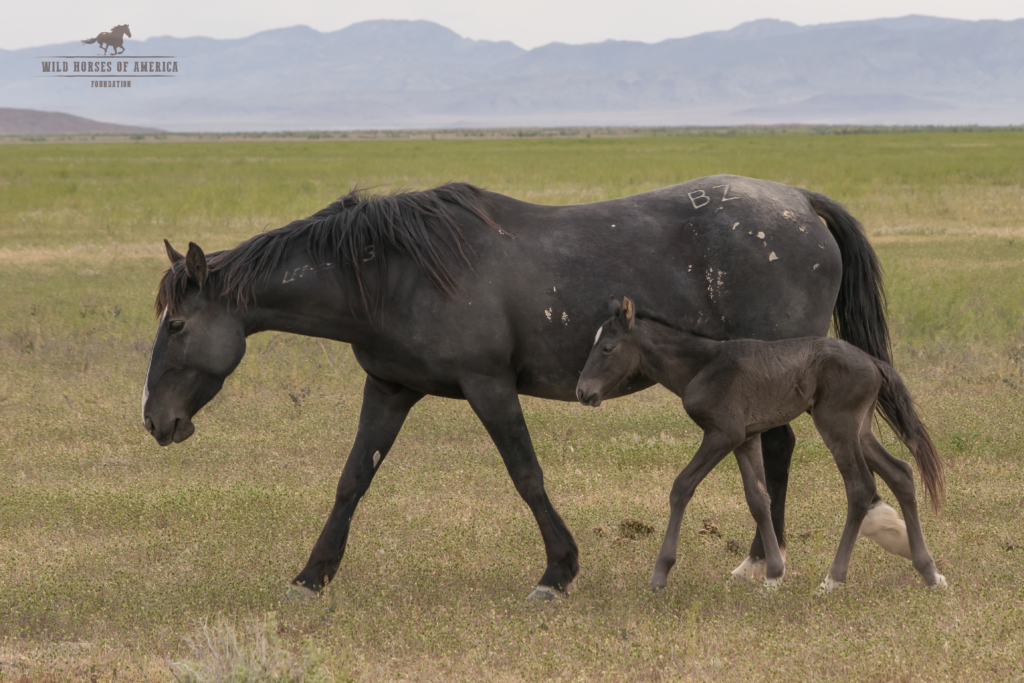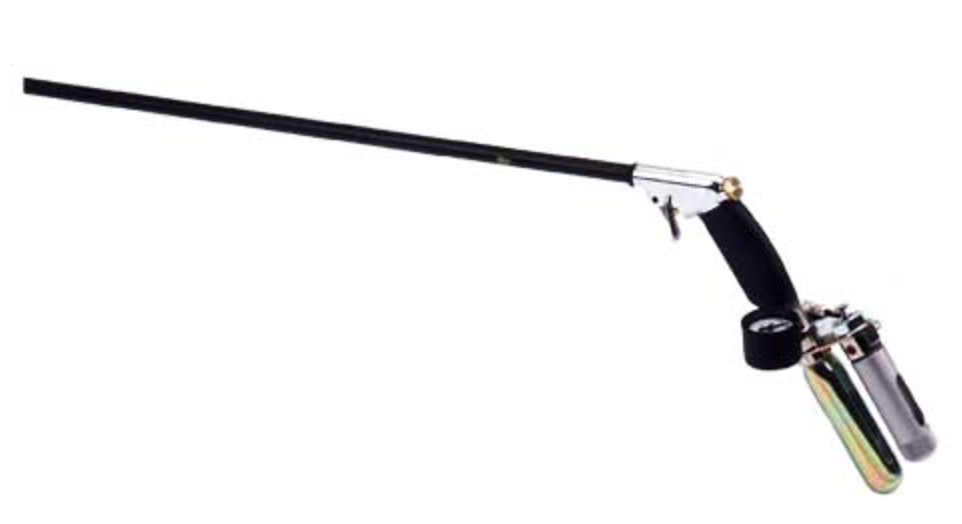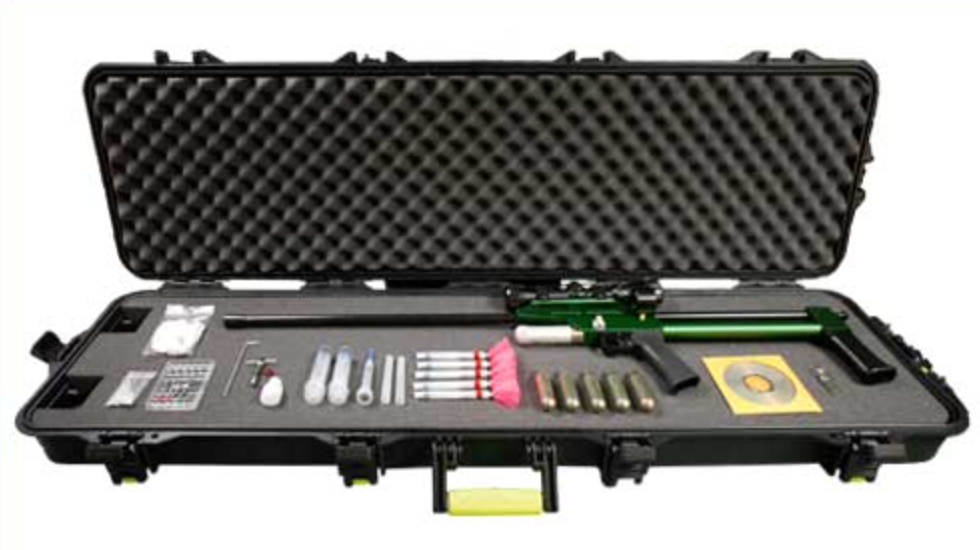ABOUT PZP
Porcine Zona Pellucida (PZP)
What is PZP?
Porcine Zona Pellucida (PZP) is an immunocontraceptive that is used to control the reproductive rate of some mammalian species, including horses, deer and elephants. It has been in use since the 1980’s.
PZP is a vaccine derived from slaughterhouse pig ovaries (yes, we’d prefer this wasn’t the case). When injected into a female mammal this foreign protein induces an immune response that results in the generation of antibodies to combat the protein. Some of these antibodies attach to the sperm receptors on the zona pellucida of the target animal’s eggs and thereby prevent fertilization.
Types of PZP
There are two primary types (brands) of PZP that are used on wild horses and burros:
ZonaStat-H – The Science and Conservation Center manufactures ZonaStat-H, otherwise known as “native PZP.” It is the product we use to treat the Onaqui Mountain Herd.
PZP-22 – Is comprised of a combination of native PZP and PZP that is incorporated into lactide-glycolide pellets that are designed to dissolve in the host’s body slowly over time. It contains both a primer and booster dose. The hope was that it would provide at least 22 months (hence, it’s name) of pregnancy prevention with a single injection, but the results have been more on par with native PZP.
Manufacturing PZP
The Science and Conservation Center in Billings, Montana manufactures the PZP that we use, which is called ZonaStat-H. The Center also provides training courses for people who are interested in becoming certified to administer PZP.
Dr. Jay Kirkpatrick (deceased) was the head of The Science and Conservation Center and was an authority on the manufacture and use of PZP to control wild horse populations, as well as other wild animals. He performed a lot of research by treating the horses of Assateague Island with PZP.
Innoculating Wild Horses and Burros
To reach full efficacy, a wild equid requires two doses of PZP to reach 90%+ resiliency to becoming pregnant in the year after treatment. A primer dose and the booster dose use the same PZP, but each requires a different adjuvant. The primer and booster dose need to be given at least two weeks apart. And, the booster dose needs to be given at least 1-2 weeks prior to breeding activity.
We typically deliver primers in the Fall, then go back and dart with boosters in the early Spring.
A number of the mares of the Onaqui were treated with PZP-22 and released during prior round-ups. They are marked with the BLM neck freeze brand, and a hip brand. They only require boosters each year.
The BZ3 brands on this mare indicate she was treated with PZP-22 in 2012 and released. She was gathered as part of an operation where other horses were removed from the range. The picture was taken in 2016, so it is obvious that her fertility treatment wore off.

How is PZP Administered?
PZP can be delivered by syringe if the wild horse is being held captive, or can be delivered remotely by dart in the wild. Dart delivery systems range from blowguns, to CO2-powered tubes, to rifles and pistols that may be CO2 or cartridge powered. Typically, you need to get within about 50 meters of a wild horse or burro to accurately deliver a dart.
Here are pictures of the dart and delivery devices we typically use:
Note: We do not typically use darts with gelatin collars, which
is the green piece on the needle of the dart in this picture.



The Cost of PZP
The cost of ZonaStatH (native PZP) is about $26 per dose. We don’t use PZP-22, so are not certain of the cost, but have heard that it is about $300 per dose.
To the cost of the dose you need to add the costs of delivery. This varies greatly by method:
Darting in the field: This requires purchase of the PZP and a dart (about $30 combined), plus the time and expenses for the darter.
Treated when gathered and released: Sometimes, during a gather and removal operation, some mares are treated with PZP and released. Typically, they are treated with PZP-22 and released. The cost of this type of treatment is mostly just the cost of the dose, since the gather and removal is the main focus of the operation. (It should be noted that cost of gathering and removing horses is rather expensive, as it typically involves at least one helicopter and a number of field crew.)
Treated when gathered and held, then treated again, and released: Lately, we’ve been hearing that it costs $2,600 to treat a horse with PZP. This figure is a bit misleading, and is sometimes taken to mean the cost of delivering a dose in the field by dart gun. This is not accurate. The $2,600 figure comes from when the BLM gathers a wild horse by helicopter, transfers it to a holding pen, injects a primer dose of PZP, holds and feeds the horse for 2-4 weeks, delivers a booster dose of PZP, then releases the horse back to the range.
Treated by bait/water trap: This is when a wild horse is trapped in a pen and a dose of PZP is delivered. This is, so far, a fairly infrequent scenario, and we don’t know the costs. However, we’d like to see it more frequently applied to herds with animals that are difficult to approach and dart by rifle.
Challenges
While PZP darts might seem like the “silver bullet” of wild horse and burro reproductive control, it is not quite so. While some herds are fairly easy to dart, many are not. Many wild horses will run at first site of a human on foot, or at the approach of a vehicle.
We won’t mention by name those groups who are against the use of PZP to control wild horse herd growth, but we will say that we are not impressed by them: Their obfuscation, and lack of real-world problem solving, means that more and more wild horses and burros will be rounded-up and removed from their native ranges.
The one thing we will address, on this front, is the topic of how PZP is registered with the EPA.
“IT’S A PESTICIDE!”
PZP is registered with the Environmental Protection Agency (EPA) as a pesticide, as are other wildlife contraceptives. Despite knowing this fact, there are anti-PZP groups and advocates who feel the need to repeatedly point out that the horses are being treated with a “PESTICIDE!” (Oh, the humanity…) While this may resonate with those unwilling to actually look into the subject, those of us in the know just sit back and roll our eyes at this juvenile argument that does nothing beyond creating unnecessary divide among horse advocates who want to help the animals. Trust us, we are not out spraying the wild horses with Raid Roach Killer…
Here’s a link to the EPA’s PZP Pesticide Fact Sheet
More Information
We encourage you to visit these sites for more information about PZP:
The Science and Conservation Center
The Humane Society of the United States
In 2023, under BLM guidance, we started administering GonaCon to a select few mares of the Opaqui Mountain Herd to better understand how this contraceptive might be useful in treating wild horse and burro herds that are difficult to treat with rifle darting. GonaCon is a longer lasting contraceptive than PZP, and may be useful in treating mares where yearly PZP treatments are not feasible (or even possible).
